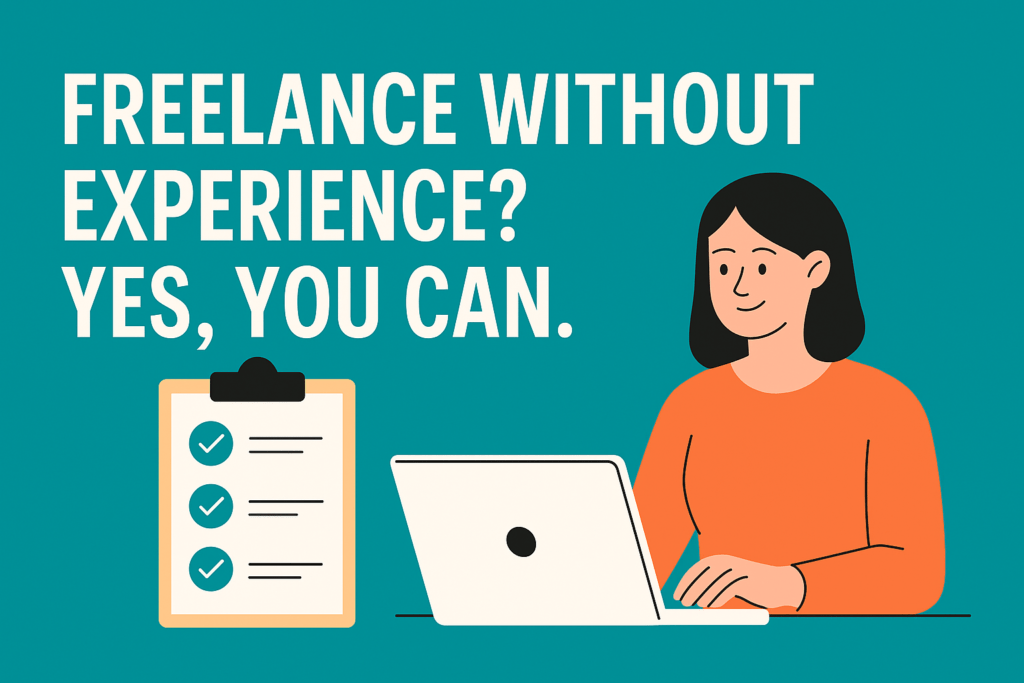So, you want to start freelancing, but you’ve hit the big wall most beginners face — no experience. Now what?
Don’t worry, because many successful freelancers began right where you are. With the right steps, mindset, and approach, you can land your first client, build a reputation, and grow your income — even if your resume feels a little thin.
In this guide, you’ll discover how to start freelancing with no experience by focusing on what you do have: your skills, your drive, and a willingness to learn.
Step 1: Choose a Marketable Skill
First things first — identify a skill you can offer. Even if you’ve never freelanced, you likely already possess something valuable.
For example:
Can you write social media captions? That’s content creation.
Are you good with spreadsheets? That’s virtual assistance.
Do you enjoy editing photos? That’s a basic graphic design skill.
If you aren’t confident yet, no problem. Start with free or low-cost learning platforms like Coursera, Skillshare, or YouTube tutorials. Not only do they help you learn, but they also give you material to showcase.
👉 Pro tip: Pick one skill and go deep. Generalists get overlooked — specialists get hired.
Step 2: Build a Simple Portfolio
Next, you need to show people what you can do.
Even without client work, create samples:
Write a blog post on a topic you enjoy.
Design a flyer for a made-up business.
Record a short video tutorial on a topic you know.
Host these on a free portfolio site, Google Drive, or even a Notion page. Eventually, you’ll upgrade, but for now, done is better than perfect.
✅ Don’t forget to include:
A short bio
Contact info
Your strongest samples
Step 3: Set Up a Profile Where Clients Hang Out
Now that you’ve chosen a skill and built your first portfolio, it’s time to get visible.
Start by creating profiles on freelance platforms such as:
Upwork
Fiverr
Freelancer
LinkedIn
These sites have clients already looking for help. That makes them perfect for beginners.
When you write your profile:
Focus on what results you deliver
Use a friendly, confident tone
Mention your availability and niche
Don’t worry about competing with pros — clients value communication, reliability, and fast learners just as much as a long resume.
Step 4: Start with Small Projects and Testimonials
Instead of trying to land a $5,000 project right away, aim for small wins.
Here’s why:
You build confidence
You collect reviews
You improve your workflow
Offer to do a test project, discounted work, or even a gig for a friend. In return, ask for a review or LinkedIn recommendation.
This leads to social proof, which makes your next client much more likely to trust you.
Step 5: Keep Learning and Improve Your Value
Now that you’ve started, keep building.
Here’s how to stay ahead:
Follow blogs like FreelanceCore, Neil Patel, and HubSpot.
Learn client communication skills to retain long-term clients.
Keep track of what your niche is asking for, and improve in that area.
The more value you offer, the more money you’ll make — simple as that.
Final Tips Before You Launch
Let’s recap with a few quick actions you can take today:
Pick one service to offer
Create 2-3 samples to showcase
Set up your freelancer profile
Apply to 2-3 simple gigs per day
Keep learning and ask for testimonials
No experience? No problem — action builds experience.
Conclusion
Starting without a resume or past clients might feel scary, but it’s 100% doable. As you’ve seen, knowing how to start freelancing with no experience is all about taking small steps, building proof, and improving every day.
Soon, you won’t be asking “Where do I begin?”—you’ll be choosing which client to work with next.
